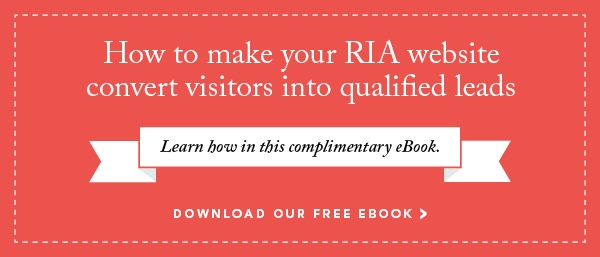Top 10 Reasons Why Financial Advisors Should Send Monthly Newsletters to Clients and Prospects
Editor's note: This blog article was originally published in 2016 and has been completely revamped and updated for accuracy and comprehensiveness.
Originally published September 29, 2016, updated October 26, 2020.
Emailing clients and prospects a newsletter each month is something all financial advisors should consider to be a standard digital marketing practice.
If financial advisors fail to provide this service, there is a good chance their competitors are using this marketing practice to nurture leads and generate new prospects for their advice and services.
What is a Newsletter?
The term “newsletter” has some negative connotations, for example, most investors do not need to receive another newsletter. But, sometimes describing a document as a newsletter is also misleading. For example, the document may be a Market Environment Report, a Market Outlook, or a drip email.
Plus, one type of document may be going to current clients and another document is going to prospects and names on drip lists.
This article is using a “newsletter” in its most generic sense.
Read our Top 10 reasons to learn more about this digital marketing strategy.
If you’re not in front of clients and prospects each month, there is a good chance someone else is. Social media advertising, telemarketing, and online webinars give other financial advisors a chance to develop a relationship with your best prospects and clients.
A failure to communicate can be a costly mistake for financial advisors who need contact to build credibility and trust with their prospects and clients.
Clients perceive financial advisors as ‘not taking care of them’ if they don’t hear something from them on a consistent basis.
Regular communication is more important during volatile times when clients are more concerned about their financial futures. Also, more clients change advisors when the stock market is volatile. Financial advisors should be protecting their clients and communicating with their competitors’ clients.
Educating investors with information that is relevant to their situations and is based on the services financial advisors provide to clients is priceless.
The keyword for financial advisor marketing is relevance. Generic content that does not have relevance is a waste of time and money. That’s because investors, clients, and prospects, will learn to ignore communications that have nothing to do with their needs or situations.
On the other hand, providing clients with information that is relevant, timely, and interesting can help them make better financial decisions for themselves and their families.
Newsletters that are branded with financial advisors’ logos, photos, and contact information can position them as credible financial experts that investors can trust. Reinforcing this messaging on a monthly basis can produce important competitive advantages when prospects are ready to start their financial advisor interview processes.
Using the latest technology to deliver newsletters and articles help position financial advisors as being current about new ways to communicate information that benefits their clients and prospects. Financial advisors want to appear “techy” in the sense that they use technology in ways that keep their clients informed about important financial topics.
Sending out newsletters in the format that investors prefer shows them their financial advisors are sensitive to their needs and preferences. There is nothing better than appearing to be user friendly. It all starts with honoring client and prospect preferences. Clients and prospects alike will vote with their feet when financial advisors are not sensitive to their needs.
The likelihood that the newsletter will be shared can result in new prospects and clients for the financial advisors who facilitate sharing. Recipients of financial advisor newsletters will forward high-quality content to friends, family, and associates. Let’s say they share the content with people they know. This can represent a major increase in the reach of financial advisor content.
Connecting each month can help reduce the emotional stress prospects and clients can experience during a ‘crisis’ that damages the market values of their portfolios. There is nothing worse than not knowing why the markets damage financial plans and future security. It stands to reason financial advisors should increase their communications during uncertain times. In fact, the more financial advisors are ‘in front of prospects and clients’, the more comfortable they will be during uncertain times.
Use the good times to educate investors about the inevitable bad times.
Timely articles in financial advisor newsletters can educate and offset misinformation that clients often hear from media that is more interested in selling advertising than providing accurate information. Even yesterday’s events may be too late to act on. Timing is everything when financial futures are at stake. Chances are if investors have “read” about it in mainstream media, it is already too late to act on the information. They benefit when financial advisors provide information they can act on in a timely manner.
Newsletters help make client zoom meetings more productive. Many financial advisors use newsletters to educate prospects and clients about topics that impact their financial well-being. Consequently, client and prospect meetings can be more about what happened and why and less about general financial topics.
Monthly newsletters count toward the 12-18 annual contacts you need to retain a client. Studies by various agencies in multiple industries support this statistic. The more “relevant” touchpoints a financial advisor has with clients during the good times the higher the probability clients will retain the financial advisors during the bad times.
It is often said financial advisors earn their keep during down markets when a high percentage of investors are prone to make bad decisions because they are fearful. Financial advisors have to help them overcome fears and make rational decisions that maintain or increase their assets during unsettled markets.


